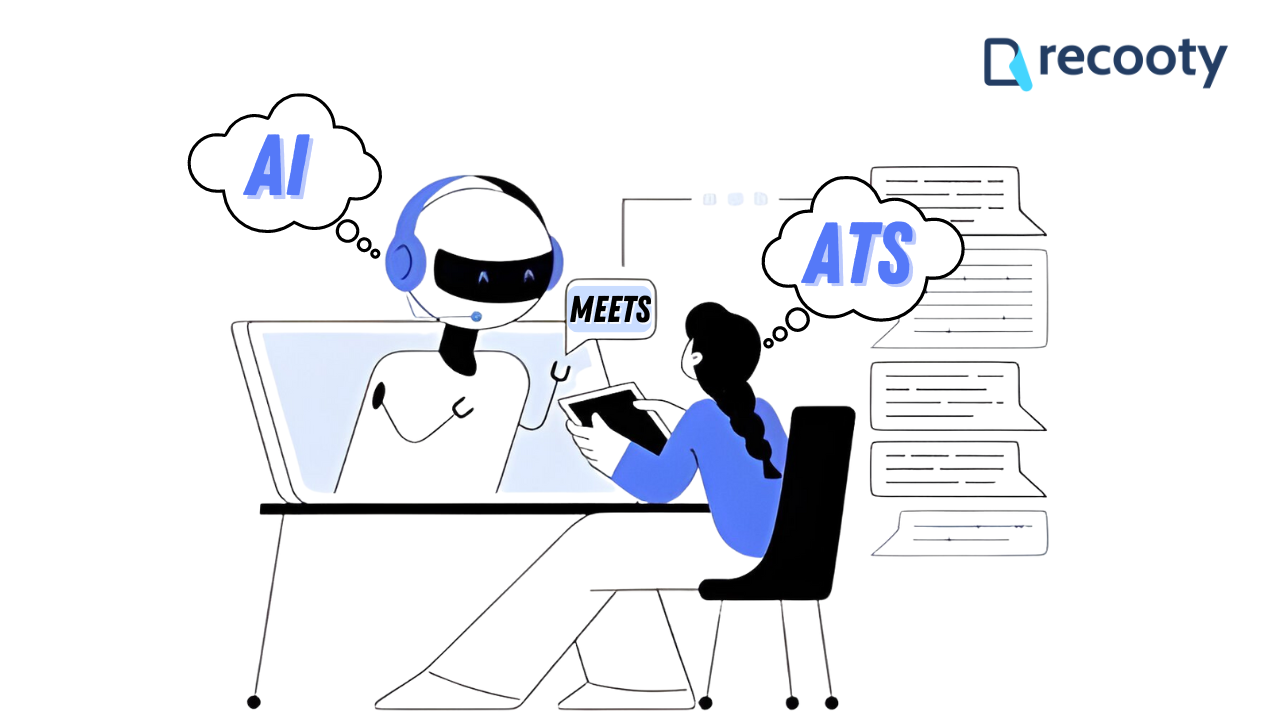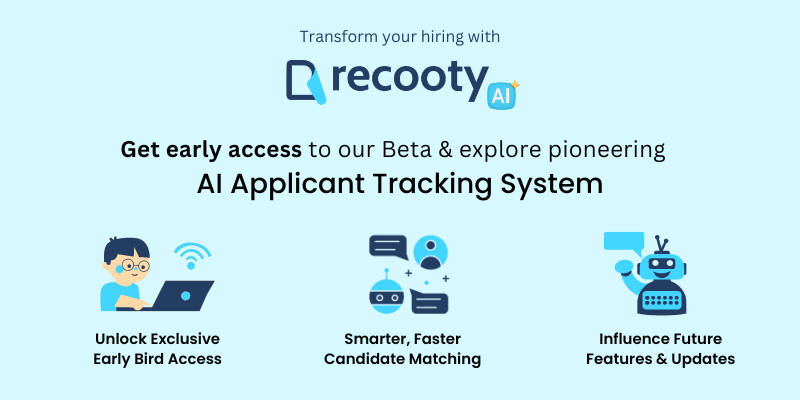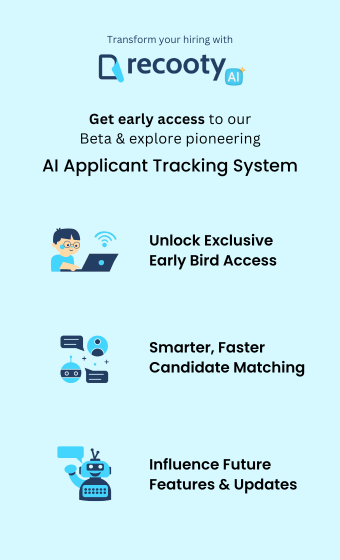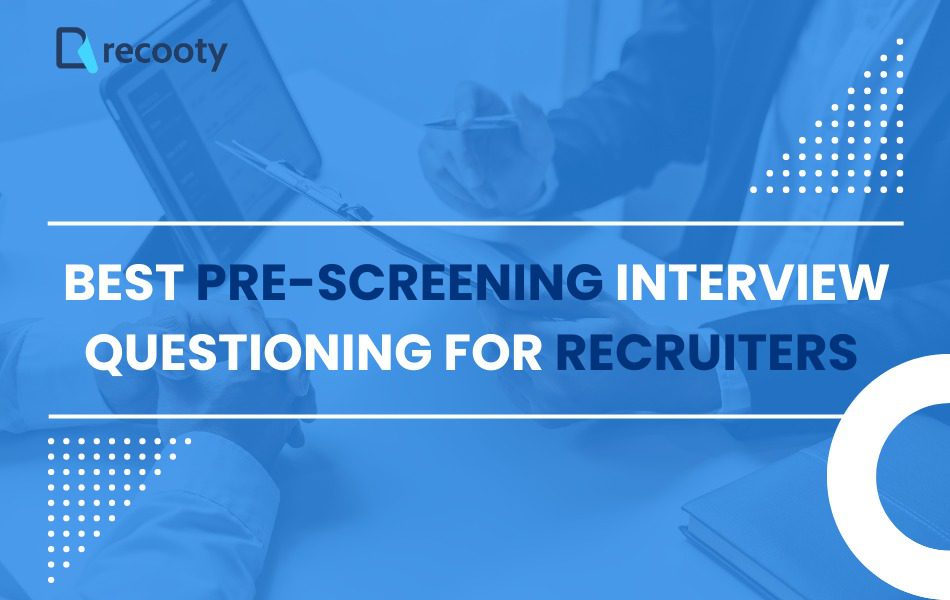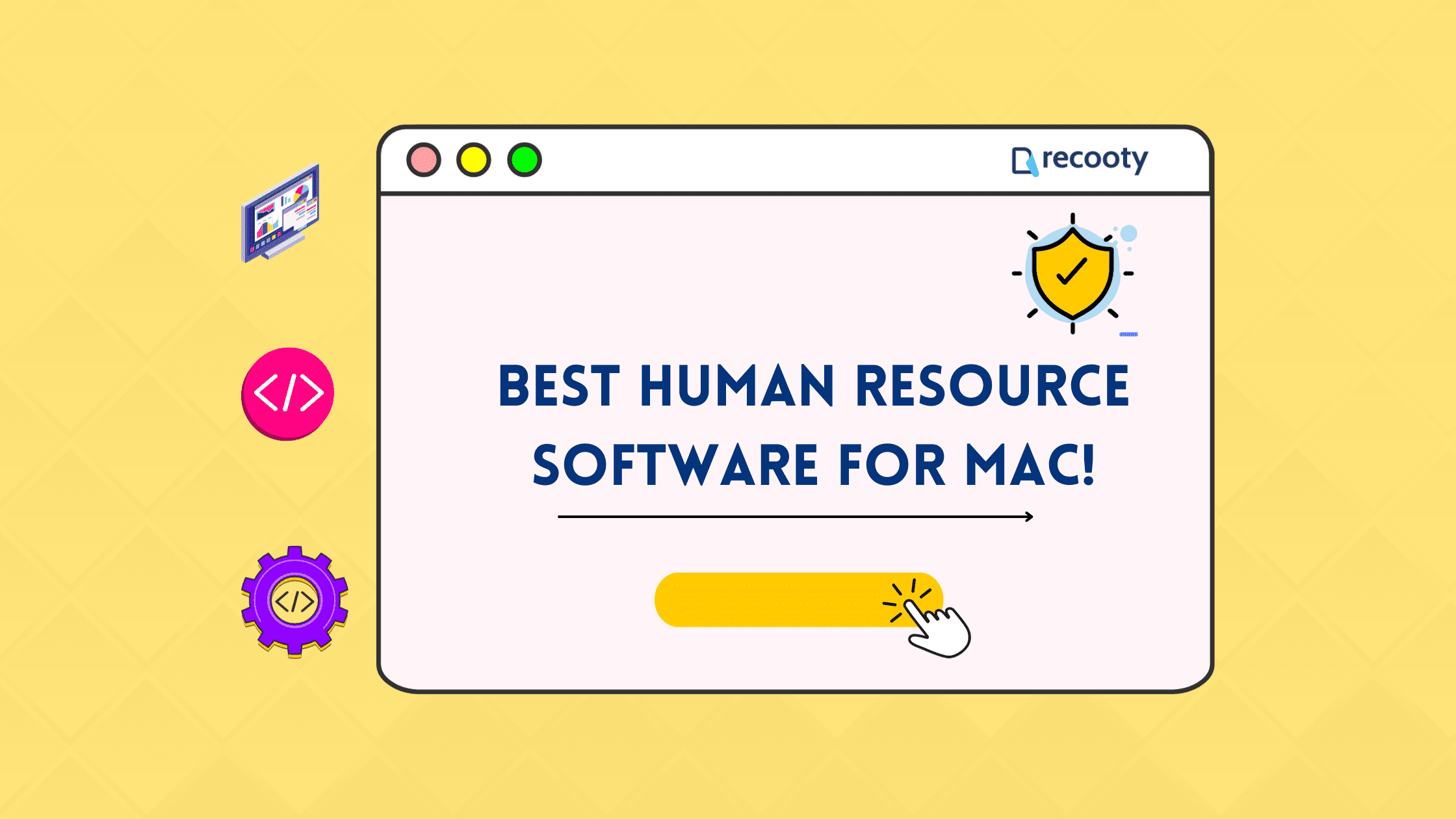
To begin with, Applicant Tracking Systems have been here for quite a while now, easing the hiring process for companies and saving them time and resources.
Since AI became mainstream and started entering almost every online product & service, its integration into the ATS platforms wasn’t something we ever speculated about, it was certain.
It did its job well to this date but what about AI integrated into the ATS systems? Is it making a difference? And a major one – What effects will we see in the future due to this?
Read on to get the answers to all of these questions and to know how AI is being used in ATS, and its role:
How is Al used in Applicant Tracking Systems?
Almost all companies delivering ATS solutions introduced artificial intelligence capabilities into the hiring workflow’s different aspects in one way or another, be it screening or evaluations.
Here’s a quick glimpse into how AI is used in Applicant Tracking Systems:
1. Integrated AI Algorithms for Routine Task Automation
A lot of repetitive tasks eat up precious time while hiring candidates which can be used for building good relations with candidates. Utilizing AI, some of these can be easily automated including:- Writing SEO-optimized job descriptions: AI ATS platforms come with job description generators that help you create job descriptions with essential keywords corresponding to a particular job role by leveraging their access to immense online data including relevant keywords and industry trends. This increases your job postings’ visibility on search engines and eventually your chances of attracting the right applications.
- Candidate communication emails: Modern ATSs have large language models (LLMs) built-in to help you write personalized emails directly from the platform to keep candidates informed at different hiring stages, from start to finish.
- Scheduling interviews with candidates: AI is integrated into the ATS to automate interview scheduling by syncing with recruiters’ calendars and checking candidates’ availability.
2. Natural Language Processing (NLP) & Machine Learning (ML) for Improved Resume Screening
Traditional resume screening or parsing ignores various nuances in formatting, understanding context, non-standard formats, and language, which are important to check a candidate’s suitability and potential success in the role.
AI-enabled resume parsing overcomes these flaws and helps you pinpoint potential fits through natural language processing (NLP). In addition, using machine learning (ML) the system learns the preferences from the characteristics of previously shortlisted and selected candidates to build an ideal candidate persona that helps in shortlisting the most potential fits.
3. Finding the Most Suitable Candidates from the Pack
AI algorithms used in ATS make locating the best candidates a breeze. This technology is usually meshed into candidate evaluation dashboards that work in the background. It shows results in the form of candidate profiles stacked onto one another with the best candidates on the top.
Among the shortlisted candidates at screening, this technology ranks them based on skills, qualifications, and relevant experience required to excel in the open position, ignoring irrelevant factors like demographic details to reduce bias.
4. AI Chatbots for Candidate Engagement
AI ATS lets recruiters have human-like communications with candidates in real-time via integrating Gen-AI-powered chatbots without any human involvement.
These chatbots can answer general queries and give information to candidates about culture, the hiring process, and the status quo.
Companies can also conduct initial screenings by using these chatbots. In an initial conversation, the bots ask questions about their experience, skills, and other aspects to get a better understanding of their profile.
What role does Al play in applicant tracking systems?
Artificial Intelligence (AI) is playing a significant role in modern Applicant Tracking Systems in various ways. In a broader sense, makes the ATS do tasks much better along with a few powerful additions.
Let’s understand this with the following points:
1. Efficiency Boost
AI boosts the overall functionalities of ATS platforms, saving time and effort for recruiters. It makes processes like candidate screening and interview scheduling faster, minimizing time-to-hire and manual effort spent on these processes.
2. Enables Data-Driven Decisions
AI easily captures and assesses deep candidate insights and trends based on available data. These insights help companies to make well-informed decisions and bring the right talent on board.
3. Fosters Better Candidate Experience
AI helps companies deliver a seamless experience to candidates, keeping them informed and engaged via personalized communications. This immensely contributes to building a positive employer brand in front of candidates.
4. Eliminating Unconscious Bias
Unfortunately, bias in hiring is a big problem that can impact the candidacy of qualified applicants negatively.
Introducing AI Algorithms in ATS is the easiest solution for this. As mentioned earlier, these algorithms assess candidates based on qualifications, skills, and other qualities, reducing the chance of bias.
What are the Al automation tools used in hiring?
Though there are multiple tools you can use during hiring, below are the most popular tools that are used by recruiters on a regular basis:
a. Job Description Generator
Applicant tracking systems have made it simple to write job descriptions on the go. An AI section is generally integrated into the job posting workflow that helps you generate tailored job descriptions when you create a job posting.
This reduces your time spent on research and manually typing job descriptions, making the job posting process faster. You can also find some standalone job description generators online.
b. HR Email Generator
To share updates with candidates at multiple hiring stages, you need emails for different purposes including application acknowledgment, scheduling interviews, and more.
Similar to job description generators, Applicant Tracking Systems also offers a Gen AI-powered email writing feature inside the platform that lets you generate high-quality emails.
AI-based ATS not only lets you write emails but also shares directly with the candidates from the platform itself.
Check Recooty’s HR Email Generator
c. Interview Questions Generator
Generic interview questions don’t work for each role as they often can’t evaluate candidates effectively because they tend to overlook the nuances inherent to each role.
For instance, when you’re hiring for, let’s say – a software developer, things might change based on the type of project you’re hiring for, seniority level, industry, and so forth. A junior developer might need guidance on basic coding principles, whereas a senior developer must showcase architectural and leadership skills.
There’s a solution a modern ATS has for you – an AI-based interview questions generator. With AI in the background, it generates questions for any role based on several criteria. In some interview question generators, you just need to mention the position, set the seniority level, and select the type of questions (focused on soft or hard skills) to get the right set of questions.
Frequently asked questions
The future scope of Applicant Tracking Systems (ATS) is promising as technology continues to advance. ATS is likely to become more sophisticated, incorporating AI and machine learning for improved candidate matching, automated resume parsing, and predictive analytics to enhance hiring decisions. Additionally, ATS may integrate with other HR technologies, providing a seamless recruitment experience for organizations.
AI’s future in recruiting is bright, with advancements expected in areas such as candidate sourcing, screening, and engagement. AI-powered tools can analyze large volumes of data to identify top talent, improve the candidate experience through chatbots and virtual interviews, and enhance diversity and inclusion efforts by reducing bias in the hiring process.
AI is being used in various ways in the hiring process, including resume screening, candidate matching, video interviewing analysis, chatbot interactions for candidate queries, predictive analytics for talent acquisition strategies, and enhancing diversity and inclusion efforts by minimizing biases in decision-making.
Modern ATS often integrate AI and machine learning capabilities to automate tasks such as resume parsing, candidate ranking, and job matching. While not all ATS are solely based on AI, many incorporate AI algorithms to streamline recruitment processes and improve efficiency.
The benefits of AI in recruiting include increased efficiency by automating repetitive tasks, improved candidate sourcing and matching through data analysis, reduced bias in decision-making, enhanced candidate experience through personalized interactions, faster time-to-hire, and better insights for strategic talent acquisition planning.
